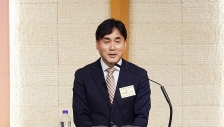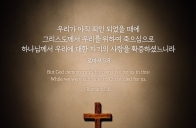 |
물론 양국은 서로 다른 문화권에 있는 나라들이지만 교내 안에서 발생하고 있는 학교 폭력의 유형은 비슷했다. 학교 안에는 ‘왕따’라는 별명을 가진 학생들이 있고, 이러한 왕따들에게는 다른 학생들이 조롱을 하며 때로는 신체적인 폭력도 가한다. 실제로 대한민국 교육부에서 발표한 2019년 1차 학교폭력 실태조사를 살펴보면 학교폭력 피해 유형 중 언어폭력(35.6%)과 집단 따돌림(23.2%)이 가장 높게 나왔다. 사이버 괴롭힘, 스토킹, 신체 폭행이 각각 약 8%대로 뒤를 이었다. 이 통계는 현재 한국에서 물리적인 폭력은 줄었지만, 오히려 정서적 학교 폭력이 증가했다는 것을 보여주고 있다. 미국 또한 언어 폭력(verbal bullying)과 사회 폭력(social bullying)이 가장 높은 비율을 차지하고 있다. 특히 한국과 다르게 다양한 인종들이 살고 있으며 성소수자의 수도 다른 나라들에 비해 많기 때문에 이런 사회 폭력이 높게 나타나는 것으로 보인다.
학교폭력에 대응하기 위해서 한국에서는 주기적인 교육과 캠페인이 실행되고 있다. 교내에서는 매년 학교폭력예방 캠페인을 하고 있으며, 학교폭력 실태조사를 모든 학생에게 의무적으로 하게 함으로써 암묵적으로 폭력을 당하는 학생들에게 신고할 기회를 주기도 하며 학교폭력을 목격한 학생들에게 제보할 기회를 준다. 하지만 내가 한국 학교에 다녔을 때 느꼈던 것은 막상 학교폭력이 일어났을 때 이에 대한 학교의 대처가 미숙하다는 것이었다. 피해자에게는 영원한 상처이지만 학생과 부모님들 선에서 명시적인 합의로 마무리되는 경우도 많으며, 가해자 학생에게 학교 측에서 단순히 경고를 주거나 처벌로 봉사활동이 주어질 때도 있었다.
미국 같은 경우, 대부분의 주에서 ‘왕따방지법’을 법제화하여 만약 학교폭력이 일어나면 심각한 상황으로 인지하여 최소 퇴학으로 처벌되며 학교와 그 주의 기관이 법적인 책임을 지도록 했다. 하지만 평상시 교내에서 학교폭력을 근절하기 위해 한국처럼 캠페인 같은 공식적인 활동들이 실행되고 있지는 않다.
한국은 상대적으로 학교폭력이 발생하는 것을 방지하기 위해 선제적인 예방 교육 및 다양한 캠페인을 활발히 하고 있지만, 미국과 같은 강력하고 명료한 ‘왕따방지법’이 법제화되어있지 않다. 그러다 보니 학교폭력 발생 시 가이드라인이 정확하지 않고 가해자에 대한 처벌 수위도 약한 것이 현실이다. 학교폭력에 대한 주기적인 교육을 실시하여 가해자도 언제든지 피해자가 될 수 있고, 피해 학생의 삶을 얼마나 심각하게 파괴하는지 인지하여 학교폭력이 근절될 수 있는 바람직한 학교 문화를 유도하는 것은 두말할 것 없이 중요하다. 아울러 학교폭력 방지법을 입법화하여 학교, 사회, 국가가 학교폭력의 근절을 위해 함께 노력하고 피해자에 대한 보호 강화 및 가해자에 대한 강력한 처벌을 병행하여 폭력에 대한 경각심을 일깨운다면 학교 폭력에 대한 인식도 제고되고 빈도수도 줄어들 수 있을 것이다.
School violence is a critical social problem that must be solved; however, regardless of its seriousness, violence is existing everywhere in the world. Currently, I am a student attending high school in Los Angeles, and I had studied in South Korea until middle school. In the two countries located on the other side of the globe, I was able to identify various kind of school violence happening and see the differentiated solutions to it.
Even though the two countries are in a separate culture, the types of the violence occurring on the campus was similar. In school, there were students called “losers,” and to these outcasts, others made fun of them and sometimes even physically assault the weak. In fact, according to the 2019 school violence survey released by the Ministry of Education in South Korea, verbal violence (35.6%) and group bullying (23.2%) were the highest among school violence behaviors. Cyber-bullying, stalking, and physical assault followed with about 8 percent each. The statics show that while physical violence has decreased now in Korea, mental school violence has increased. The United States also has the highest percentage of verbal bullying and social bullying. Especially, unlike Korea, since there are various races and higher number of sexual minorities that other countries, social violence seems to be high also.
In South Korea, periodic education and campaigns are being held to cope with school violence. School violence prevention campaigns are held every year, and by making it mandatory for all students to complete a survey on school violence, which allows students who are implicitly assaulted by bullies and the witnesses to have an opportunity to report it. However, when I was studying in Korea, I felt that the school was insufficient in dealing with school violence when it actually occurred. Even though it is an eternal wound to the victim, the situation often concluded by explicit agreements between the students and their parents, and sometimes the school simply warned the assailant students or give volunteer work as a punishment.
In the United States, most states have enacted “anti-bullying laws” to recognize school violence as a serious issue and punish schools and their state agencies with legal responsibility and expulsion. However, in my current school in U.S., no official activities such as campaigns are not happening to eradicate school violence on campus.
South Korea is actively engaged in preemptive prevention and various campaigns to prevent school violence from occurring, but a strong and clear punishment like “anti-bullying law” is not legislated. Therefore, the guidelines for school violence are not accurate and the level of punishment for bullies is weak. It is certainly important to provide periodic education on school violence to induce a desirable school culture where students recognize that anyone can be the victims of school violence and how school violence seriously destroys the life of the victim. In addition, if schools, government, and the society work togeter to eradicate school violence and raise awareness of violence by strengthening protection for victims and punishment of assailants at the same time, the awareness of school violence will be enhanced and the frequency of the violence will be reduced.
 |
김지태
데미안 하이스쿨(Damien HIgh School)
왕따없는세상운동본부 학생회원(http://outcast.or.kr)














![[이미지 묵상] 그런즉 누구든지 그리스도 안에 있으면 새로운 피조물이라 이전 것은 지나갔으니 보라 새 것이 되었도다 (고후 5:17)](https://missionews.co.kr/data/images/full/14265/5-17.jpg?w=196&h=128&l=50&t=40)
![[이미지 묵상] 한번 죽는 것은 사람에게 정해진 것이요 그 후에는 심판이 있으리니 (히 9:27)](https://missionews.co.kr/data/images/full/14264/9-27.jpg?w=196&h=128&l=50&t=40)










